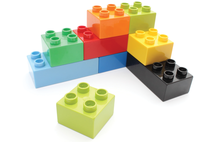Snapped Together
Canonical wants to leave the Debian package format behind and give Snappy Personal a new lease on life.

Krzysztof Ratajczak, 123RF
Canonical wants to leave the Debian package format behind and give Snappy Personal a new lease on life.
Unlike Windows, Linux systems come with a large number of packages. Package management components include a format for the software archives as well as software with a front end for administering the archive.
Until now, Canonical has used the DEB format [1], the dpkg [2] package manager, and Apt [3] as a command-line front end. Additionally, the company offers various tools with a graphical interface that make tasks like installation, deinstallation, and administration of packages easy for users.
These fundamentals will possibly undergo a radical change in the future since Canonical has created its own package format Snappy Personal. This effort belongs to further development of the Click format [4] that was developed for Ubuntu Touch (Figure 1).
[...]